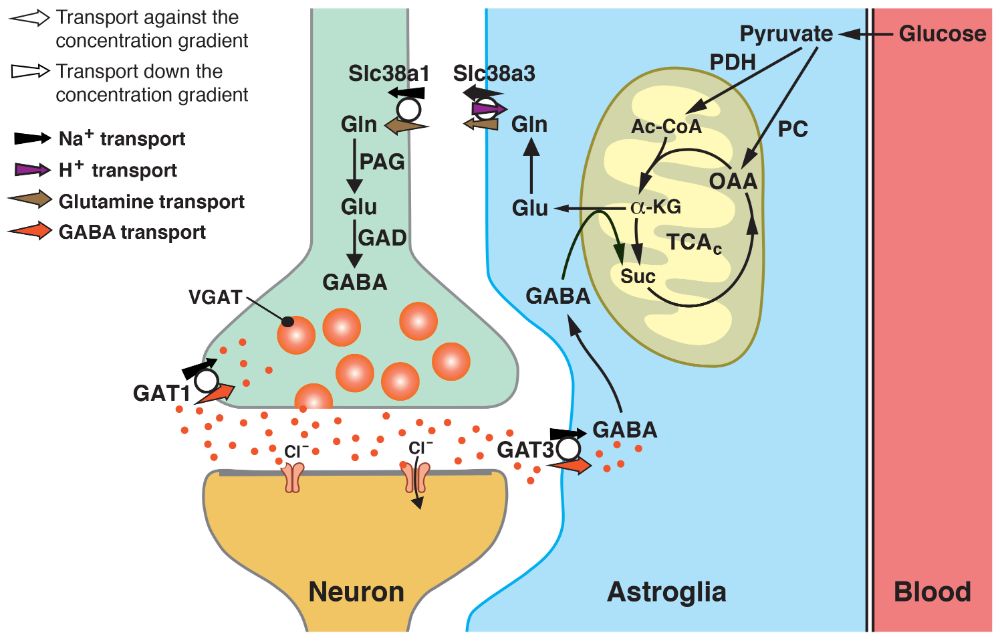Main findings
-
Slc38a1 has an intrinsic role in GABA formation.
-
Slc38a1-mediated glutamine transport regulates the GABAergic vesicular load and vesicle dynamics implicating impact on presynaptic plasticity.
-
Slc38a1-dependent glutamine transport induces high-frequency membrane oscillations in cortical and hippocampal fast-spiking cells which triggers action potentials.
-
Slc38a1 silencing alters gamma oscillations and ocular dominance plasticity, implicating that Slc38a1 is required for normal maturation of neuronal circuits.

Slc38a3 (SN1/SNAT3) and Slc38a1 (SAT1/SA2/SNAT1) participate in the glutamate/GABA-glutamine cycle to sustain replenishment of GABA at a GABAergic synapse. For details, see Qureshi et al., Cereb Cortex, 2019; supplementary figure S6B.

Genetic inactivation of Slc38a1 results in i) Reduced total levels of glutamine, glutamate, aspartate and GABA in the brain although GABA levels are sustained at the nerve terminals at the expense of its two precursors glutamine and glutamate, ii) Compensatory upregulation of PAG and GAD67, two key enzymes in the synthesis of GABA, to sustain GABA levels ii) smaller synaptic vesicles with lower GABA content but with higher vesicle density, iii) reduced frequency of γ oscillations and iv) impaired ocular dominance plasticity. For details, see Qureshi et al., Cereb Cortex, 2019; supplementary Info.
Key words
Slc38, Slc38a1, GABA, glutamate/GABA-glutamine cycle, neurotransmitter replenishment, parvalbumin, SNAT2, GAD67, GAD65, glutaminase, fast-spiking interneurons, high-frequency membrane oscillations, synaptic plasticity, ocular dominance plasticity
Further reading
- Paper
- Supplementary Info (ZIP-file)